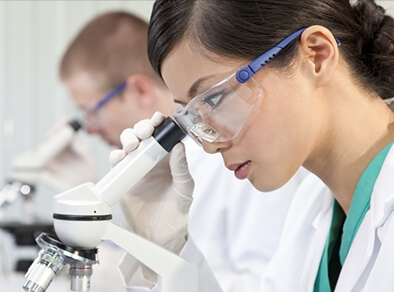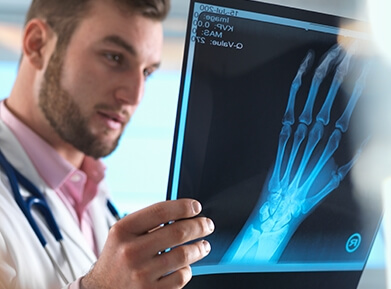Rheumatoid arthritis (RA) is an autoimmune disease in which the body's immune systemCLOSE Immune system: the body’s natural defense mechanism that responds to infection, injury, and diseases. It can also help heal damaged tissues. attacks joint tissue, causing inflammation of the joint lining. What does that mean for you? Joint pain, stiffness, and sometimes even loss of normal movement. Read on to learn more about the symptoms, causes, and diagnosis of RA.
RA Symptoms
Although RA is a chronic—or persisting—disease, symptoms may come and go unpredictably. That’s because RA symptoms may come in flares where there may be periods of increased disease activity and fade or disappear in periods of remissionCLOSE Remission: periods of decreased disease activity. . During a flare, you may notice some or all of the following symptoms:
 Painful, swollen, warm joints
Painful, swollen, warm joints Pain and stiffness lasting for more than 30 minutes in the morning or after a long rest
Pain and stiffness lasting for more than 30 minutes in the morning or after a long rest Inflammation in hands (wrist and finger joints), neck, shoulders, elbows, hips, knees, ankles, or feet
Inflammation in hands (wrist and finger joints), neck, shoulders, elbows, hips, knees, ankles, or feet
 Symmetrical pattern of inflammation, meaning both sides of the body are impacted at once
Symmetrical pattern of inflammation, meaning both sides of the body are impacted at once Fatigue, occasional fever, and a general feeling of discomfort
Fatigue, occasional fever, and a general feeling of discomfort
If you are experiencing any of the symptoms described above, it’s important to talk with your doctor.
What May Cause RA?

Genetic Factors
Certain genesCLOSE Genes: genetic material that is passed on to you from your parents that determines your traits. may play a role in the immune system—for some people, genetic factors may be involved in determining whether they will develop RA.

Environmental Factors
RA can be triggered by infection in people who have inherited a genetic tendency for the disease. It’s important to remember, however, that RA is not contagious.
Why Is Early Diagnosis of RA Important?
RA can worsen and destroy joints overtime, so early diagnosis and treatment is important. Symptoms may include:
Damaged or weakened tendonsCLOSE Tendons: tissue that connects muscle to bone and allows movement of a structure. that can tear apart
Swelling that can severely damage or destroy ligamentsCLOSE Ligaments: tissue that connects bone to bone—holding structures together and providing stability., joint cartilageCLOSE Joint cartilage: tissue that covers the ends of the bones, providing cushion for a joint. , and bone
Deformity caused by bone erosionCLOSE Bone erosion: bone tissue breaks down over time due to an imbalance in the immune system.
How Is RA Diagnosed?
There are several tests and tools your doctor may use to diagnose RA. First, he or she may ask questions about your medical history and examine the joints that are bothering you. Next, your doctor may perform tests to confirm a diagnosis, including, but not limited to:

Blood Tests
A rheumatoid factor test looks for an antibodyCLOSE Antibody: a protein—produced by the immune system when it detects harmful substances like bacteria—that fights off infection. called a rheumatoid factor. About 80% of people with RA eventually have this antibody, although it’s possible to have the rheumatoid factor in your blood and not have RA.
Another test measures your erythrocyte sedimentation rate. People with RA tend to have abnormally high sedimentation rates.

X-rays
X-rays are used to help determine the extent of damage in the joints that are affected by RA. Plus, a sequence of X-rays taken over time can help to show the progression of the disease.
When it comes to treating RA, early diagnosis and treatment is extremely important because it can help slow disease progression and help prevent joint damage. So if you think you could be suffering from RA, be sure to talk with your doctor about your symptoms.









